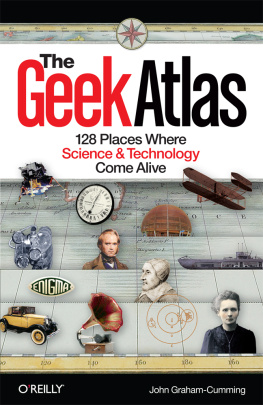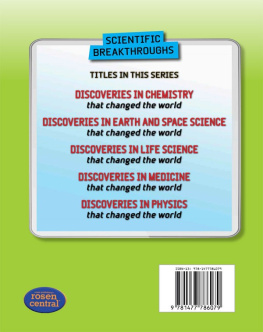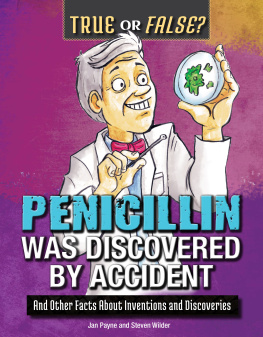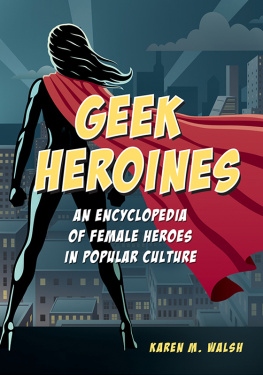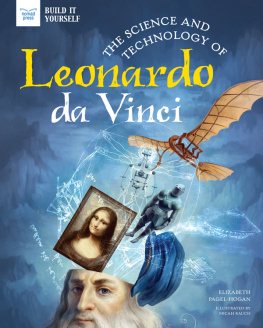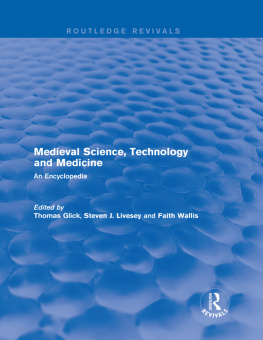Copyright 2009 John Graham-Cumming. All rights reserved.
Printed in the United States of America.
Published by OReilly Media, Inc., 1005 Gravenstein Highway North, Sebastopol, CA 95472.
OReilly books may be purchased for educational, business, or sales promotional use. Online editions are also available for most titles ( .
May 2009: First Edition.
Nutshell Handbook, the Nutshell Handbook logo, and the OReilly logo are registered trademarks of OReilly Media, Inc. The Geek Atlas , the cover image, and related trade dress are trademarks of OReilly Media, Inc.
The image of the AbioCor Total Artificial Heart on the cover is used courtesy of the Smithsonian Institution, National Museum of American History.
Many of the designations used by manufacturers and sellers to distinguish their products are claimed as trademarks. Where those designations appear in this book, and OReilly Media, Inc. was aware of a trademark claim, the designations have been printed in caps or initial caps.
While every precaution has been taken in the preparation of this book, the publisher and author assume no responsibility for errors or omissions, or for damages resulting from the use of the information contained herein.
Introduction
A Mind Forever Voyaging
For my 13th birthday my parents took me around Dove Cottage, former home of the English poet William Wordsworth. I remember only one thing from that visitan underground stream that kept one of the rooms cool, making it ideal storage for food. There in Wordsworths house was a little bit of science waiting to be discovered.
Unfortunately, finding great scientific places to visit isnt as easy as finding the homes of long-dead poets, painters, or writers. Call any tourist office around the world and ask about scientific, mathematical, or technological attractions, and youll be greeted with either a long silence or a short list of the obvious famous science museums. This is a pity, because if theres one thing that makes science stand apart, its the willingness of scientists to freely share what they do. And the world is full of wonderful sites, museums, and seemingly random places that make the geek heart pound a little harder. Many of them are even free of charge.
This books 128 places is a personal list of sites to visit where science, mathematics, or technology happened or is happening. You wont find tedious little third-rate museums, or plaques stuck to the wall stating that Professor X slept here among the selections. Every place has real scientific, mathematical, or technological interest.
Not all of the places feature man-made inventions or discoveries. There are also natural phenomena such as the moving Magnetic North Pole (). And there are a few graves of famous scientists, but rest assured that those graves have equations on them.
Each place has its own chapter, and each chapter is split into three parts: a general introduction to the place with an emphasis on its scientific, mathematical, or technological significance; a related technical subject covered in more detail; and practical visiting information. The book can be used as a true travel guide (and I hope you have the opportunity to visit some of the places), but it is also for the armchair traveler, whom I hope is inspired to put the book down and learn more about the science, mathematics, and technology covered.
In the technical descriptions, Ive tried to simplify the science without dumbing it down to the point of using analogies and metaphors instead of actually describing the ideas. So as you flip through the book, youll see the sorts of pictures youd find in a travel guide, but also a lot of diagrams and equations. (Any reader who doesnt want to deal with the equations can safely read the first part of each chapter.)
Theres also quite a bit of abstract mathematics covering topics like set theory, transfinite numbers, Fermats Last Theorem, prime numbers, group theory, and more. To non-mathematicians these topics may be off-putting, but I suggest you stick with them. I promise that when you understand Cantors diagonalization argument () showing the existence of different magnitudes of infinity, a whole world of pure mathematical beauty will be revealed. (Yes, I admit itIm a mathematics nerd.)
One thing that Ive been asked by reviewers again and again is to recommend one single must-see place. Picking one place is next to impossibletheres just so much great science out therebut I will admit to shedding a tear every time I see the Difference Engine at the Science Museum in London (). Its mathematics in motion and arithmetic in action.
A disappointing trend with science museums today is a tendency to emphasize the Wow! factor without really explaining the underlying science. If it appears that Ive overlooked your favorite museum, ask yourself whether it has any of the following annoying attributes: a short name ending with an exclamation mark, a logo featuring pastel colors or a cuddly cartoon mascot, or an IMAX theater. Believe me, theres more real Wow! in understanding Foucaults measurement of the speed of light () than in any movie, no matter how big it is.
A number of places do not appear in this book because tours have ended or been severely curtailed on account of security concerns. This applies almost exclusively to the United States, where some interesting places for scientific tourism are now considered too sensitive for the general public. Other places have restricted access to U.S. citizens only (which is ironic, given the contribution of non-Americans to U.S. scientific research); some of these have been included in the hope that citizenship restrictions will be lifted in the coming years.
If your favorite scientist is missing, it may simply be because theres no single place that sums up his or her work. For example, I was hoping to include rocketry pioneer Robert Goddard, but none of the possible places is really suitablethe Goddard Rocket Launching Site in Massachusetts is just a historic marker in the middle of a golf course; the Goddard Space Flight Center in Maryland is great, but there are only so many NASA sites this book could hold; and the Roswell Museum in New Mexico bills itself more as an art museum than anything else. Nevertheless, of the three, the Roswell Museum is the bestit does, after all, have most of Goddards equipment on display.
Other places almost made the cut, but werent quite up to scratch. I wanted to include the Florence Nightingale Museum in London, because Nightingales contribution to using graphics to illustrate quantitative information is largely overlooked. She was the first woman to become a member of the Royal Statistical Society, and her diagrams of the causes of death at a military field hospital are on display at the museum. Unfortunately, the display is a poor reproduction that provides no real information about what the visitor is seeing or about Nightingales contribution to the use of graphics (including pie charts).
If youre still asking yourself why your favorite place isnt covered, please visit the books accompanying website and tell me about it. Im probably not aware of it and would love to go and visit. Who knows, there might be enough good ideas for a second edition!
May 2009
P.S. As it turns out, I probably should have paid more attention at Dove Cottage. Years later I discovered that Wordsworth was an admirer of Newton, and wrote the following lines inspired by Newtons statue at Trinity College, Cambridge:

